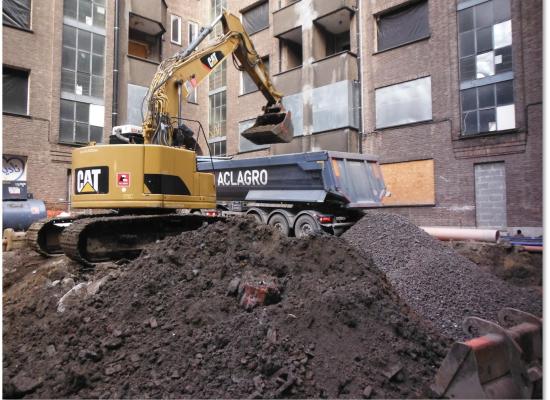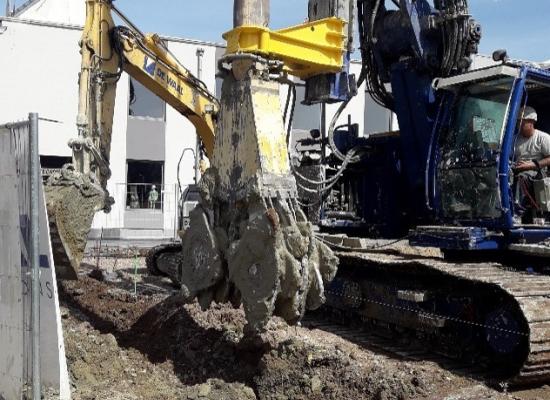The subject of this contract is the demolition of the existing buildings, the removal of trees and greenery, and the execution of soil remediation works at the plots 1022S and 1022R.
At the site located in Roeselare, Koning Leopold III-laan 85-92, there was, on the one hand, a creosote contamination with BTEX, mineral oil, and PAHs, and on the other hand, a homogeneous contamination in the top layer with heavy metals and PAHs.
The cause of the contamination was, respectively, the disposal of tar-containing products and the application of a debris layer for the storage of American military equipment (1944-1970).
Before the soil remediation works could begin, some preparatory works had to be carried out:
-
Removal of vegetation. This includes the vegetation from a row of trees at the edge of the site and areas with shrubbery;
-
Demolition of buildings. This also includes the foundation and drainage, as well as the pavement. Only the underground structures that are not contaminated should be removed, and those that are not deeper than the excavation depth.
The demolition works were carried out on behalf of the City of Roeselare.
The core with the creosote contamination was excavated to 3.5 m below ground level. For this purpose, a groundwater pumping system was installed to lower the groundwater, after which the pumped water was sent through a groundwater purification installation before being discharged.
The groundwater purification installation had a flow rate of 10 m³/hour and consisted o
- Oil-water separator
- Aeration (iron removal) with air-side activated carbon filter
- Automatic backwashable sand filter
- 2 water-side activated carbon filters in series
The excavation zone was backfilled to ground level.
The top layer with heavy metals and PAHs was excavated and removed for processing over the entire surface to a depth of 75 cm below ground level, after which a topsoil layer was applied. The southern berm that was present was also completely excavated and removed for processing.
Excavation tonnages:
-
Topsoil remediation: 6,650 tons
-
Southern berm: 2,700 tons
-
Creosote contamination: 2,100 tons
During the execution of the works, a large part of the soil and berm was found to contain asbestos. Due to the presence of asbestos, the necessary safety measures were taken, such as the installation of a decontamination unit, a nebulization system, air measurements, and the use of PPE specifically for asbestos (Tyvek, gloves, P3 mask, etc.).
A portion of the soil classified as non-hazardous waste was sieved on-site under controlled conditions (nebulization system, air measurements, wearing of PPE specifically for asbestos). The remaining portion was transported either to a soil processing center for treatment or to a landfill due to being non-recoverable, based on the degree of contamination.



